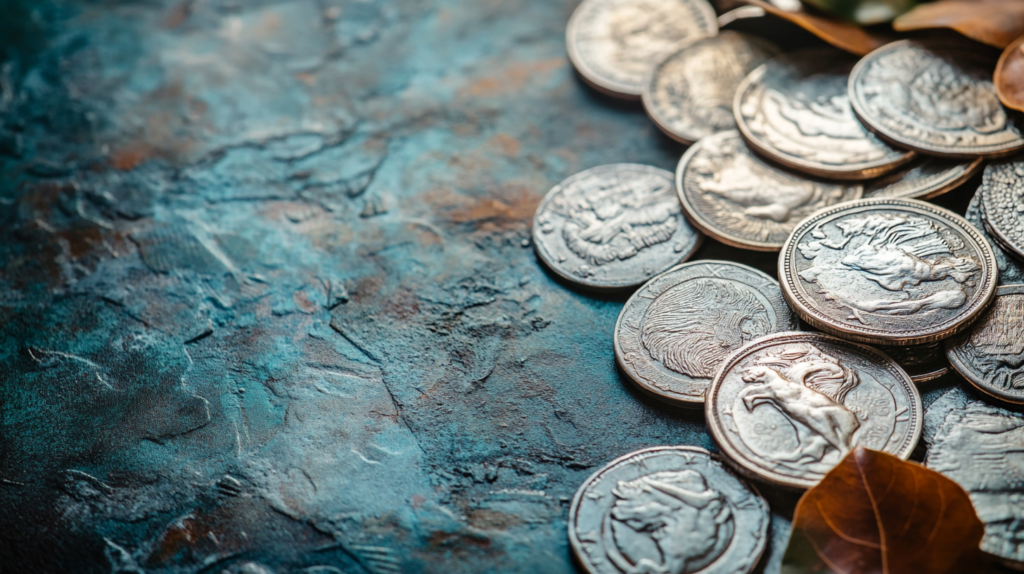Silver: The Precious Metal That Fueled the Roman Empire
Silver was one of the most important commodities in the Roman Empire, serving as a foundation for its economy, a symbol of wealth and prestige, and a practical material for crafting everything from coins to luxurious household items. This precious metal played a crucial role in Roman society, reflecting its influence on politics, trade, art, and daily life.
In this blog, we explore the significance of silver in the Roman Empire, its uses, and how it helped shape one of history’s greatest civilizations.

The Sources of Roman Silver
The Roman Empire sourced its silver primarily from mines in Spain, particularly in the regions of Hispania Baetica and Hispania Tarraconensis. Other major mining sites included regions in modern-day Greece, Turkey, and the Balkans. These mines were highly productive, yielding large quantities of silver that bolstered Rome’s economic and military dominance.
Roman engineers were skilled in mining techniques, using water-powered machinery and advanced tools to extract ore efficiently. The abundance of silver allowed Rome to expand its monetary system and finance its vast empire.
Silver in the Roman Economy
Silver was the backbone of the Roman monetary system. The empire’s economy relied heavily on the production and circulation of silver coins, particularly the denarius, which became the standard Roman currency.
Silver Coins:
The denarius, introduced in 211 BCE, was a small silver coin that became the cornerstone of Roman commerce.
Over time, other denominations, such as the quinarius and the siliqua, were introduced, and they were also made of silver.
Silver coins were used for trade across the empire, connecting distant provinces and facilitating economic growth.
Trade and Commerce: Rome was able to build trade networks throughout the Mediterranean and beyond with the aid of silver coins. China and India, two nearby civilizations that placed a high value on Roman silver, traded it for upscale commodities like spices and silk. Silver: A Symbol of Wealth and Status
Beyond its economic function, silver was a marker of wealth and prestige in Roman society. The affluent used silver to display their status through:
Household Items: Wealthy Romans often owned silver tableware, including plates, cups, bowls, and utensils, which were intricately decorated and showcased during feasts.
Jewelry: Silver was a popular choice for crafting jewelry, such as necklaces, rings, and bracelets. Its malleability allowed artisans to create intricate designs that symbolized sophistication and luxury.
Religious Offerings: Silver was frequently used in religious rituals and offerings, including statues, chalices, and ceremonial objects, emphasizing its sacred value.
Military and Political Uses of Silver
Silver also played a vital role in the military and political systems of the Roman Empire:
Soldiers’ Salaries: Roman soldiers were often paid in silver coins, which motivated them to serve loyally. The term salary itself originates from salarium, initially referring to the salt rations given to soldiers, later replaced by silver payments.
Tributes and Taxes: Conquered provinces were often required to pay tributes in silver, reinforcing Rome’s economic power. Taxes were collected in silver-funded public works, military campaigns, and the lavish lifestyles of the elite.
Political Propaganda: Roman emperors frequently used silver coins as propaganda tools. These coins bore their portraits, titles, and depictions of military victories or divine favor, reinforcing their authority and legitimacy.
Silver in Roman Art and Craftsmanship
Roman silversmiths were renowned for their skill and creativity. They crafted items ranging from ornate dining sets to exquisite jewelry, often incorporating intricate patterns, mythological scenes, and personalized inscriptions.
The Treasure of Hildesheim: A famous example of Roman silver artistry, the Hildesheim treasure, discovered in Germany, includes beautifully crafted tableware that showcases the high level of craftsmanship in the Roman Empire.
Religious Artifacts: Silver was used to create statues of gods and goddesses, altar decorations, and votive offerings, blending artistry with religious devotion.
The Decline of Silver in the Roman Empire
Over time, the abundance of silver began to decline due to over-mining and economic strain. The Roman Empire was dealing with serious issues by the third century CE, such as depreciating money and inflation.
The silver content of coins like the denarius was reduced, eroding trust in the currency and destabilizing the economy.
This decline marked a turning point in Roman history as the empire struggled to maintain its once flourishing economic and military systems.
The Legacy of Roman Silver
The use of silver in the Roman Empire left a lasting legacy. Roman silver coins are among the most studied and collected artifacts today, providing historians with valuable insights into the empire’s economy, politics, and culture. The artistry of Roman silversmiths continues to inspire modern jewelers and artisans.
Conclusion
Silver was more than just a precious metal in the Roman Empire—it was a cornerstone of its economy, a symbol of its wealth, and a medium for its artistic and political expression. From coins that facilitated global trade to luxurious items that adorned the homes of the elite, silver reflected the empire’s grandeur and ambition.
Even in decline, the story of Roman silver serves as a reminder of how vital resources can shape the destiny of civilizations. As we admire the legacy of Roman silver today, we are reminded of its timeless allure and the role it played in building one of history’s greatest empires.
“In the gleam of silver lies the history of an empire, a reflection of its power, creativity, and enduring legacy.”



